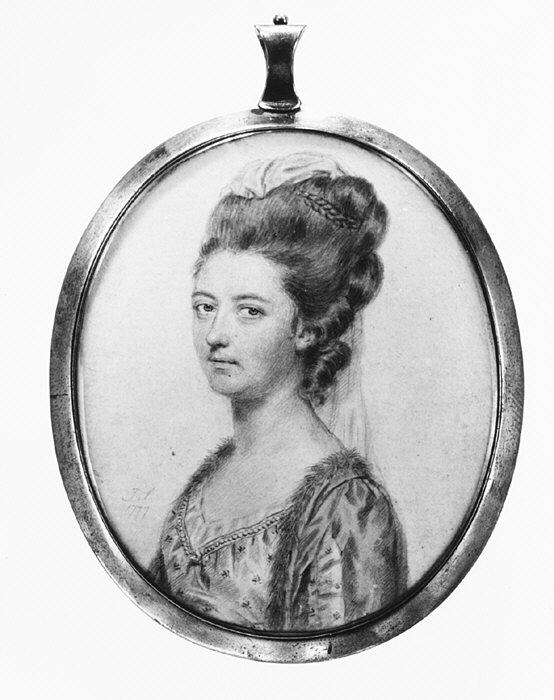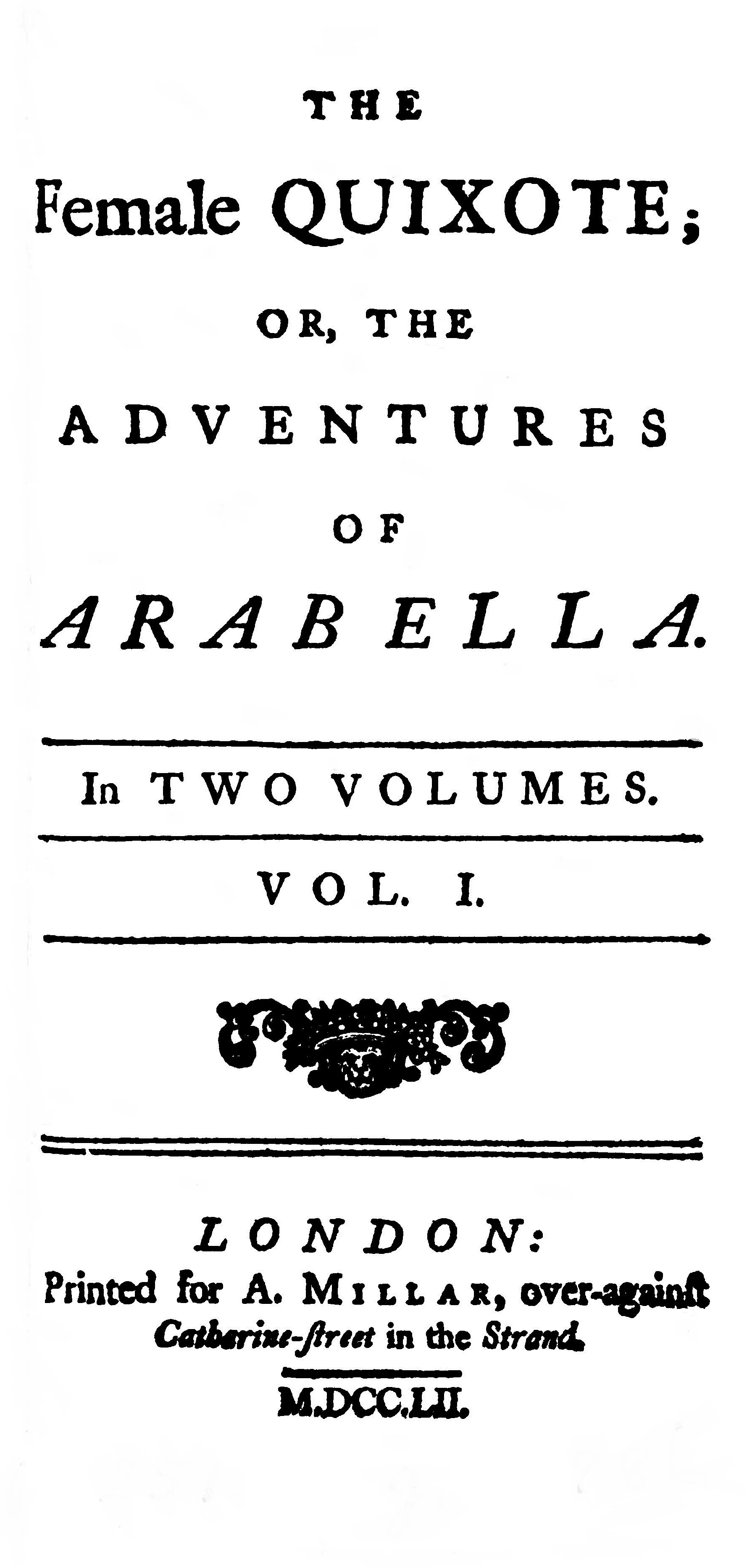|
Sophia (novel)
''Sophia'' is a novel published in 1762 by Charlotte Lennox, a British novelist best known for her 1752 satirical novel ''The Female Quixote''. Originally published in Lennox's periodical ''The Lady's Museum ''The Lady's Museum'' was a monthly magazine published in the United Kingdom between 1760 and 1761. The magazine was edited and largely—if not entirely—written by British novelist and translator Charlotte Lennox. Like most eighteenth-century ...'' as ''Harriet and Sophia'' between 1760-1, this novel is only the second British novel to be serialized in a magazine, and the first one to be published this way by a woman. Major Characters * Sophia Darnley – Mr. Darnley's younger daughter. Sophia attracts Sir Charles Stanley away from her sister but, because of her poverty, doubts his honorable intentions. She ends up treating him coldly, which leads him to doubt her love. Eventually Mr. Herbert helps her win him over. * Harriet Darnley – Sophia Darnley's older sister ... [...More Info...] [...Related Items...] OR: [Wikipedia] [Google] [Baidu] |
Charlotte Lennox
Charlotte Lennox, ''née'' Ramsay (c. 1729 – 4 January 1804), was a Scottish novelist, playwright, poet, translator, essayist, and magazine editor, who has primarily been remembered as the author of ''The Female Quixote'', and for her association with Samuel Johnson, Joshua Reynolds and Samuel Richardson. However, she had a long, productive career in her own right. Life Charlotte Lennox was born in Gibraltar. Her father, James Ramsay of Dalhousie, was a Scottish captain in the British Army, and her mother Catherine, née Tisdall (died 1765), was Scottish and Irish. She was baptised Barbara Charlotte Ramsay. Very little direct information on her pre-public life is available, and biographers have extrapolated from her first novel such elements as seem semi-autobiographical. Charlotte lived for the first ten years her life in England before her father, who was a lieutenant in the guards, moved the family to Albany, New York in 1738, where he was lieutenant-governor. He died in ... [...More Info...] [...Related Items...] OR: [Wikipedia] [Google] [Baidu] |
The Female Quixote
''The Female Quixote; or, The Adventures of Arabella'' is a novel written by Charlotte Lennox imitating and parodying the ideas of Miguel de Cervantes' ''Don Quixote''. Published in 1752, two years after she wrote her first novel, ''The Life of Harriot Stuart'', it was her best-known and most-celebrated work. It was approved by both Henry Fielding and Samuel Richardson, applauded by Samuel Johnson, and used as a model by Jane Austen for ''Northanger Abbey''. It has been called a burlesque, "satirical harlequinade", and a depiction of the real power of females. While some dismissed Arabella as a coquette who simply used romance as a tool, Scott Paul Gordon said that she "exercises immense power without any consciousness of doing so". Norma Clarke has ranked it with ''Clarissa'', '' Tom Jones'' and ''Roderick Random'' as one of the "defining texts in the development of the novel in the eighteenth century". Plot Arabella, the heroine of the novel, was brought up by her widowed fa ... [...More Info...] [...Related Items...] OR: [Wikipedia] [Google] [Baidu] |
The Lady's Museum
''The Lady's Museum'' was a monthly magazine published in the United Kingdom between 1760 and 1761. The magazine was edited and largely—if not entirely—written by British novelist and translator Charlotte Lennox. Like most eighteenth-century periodicals, ''The Lady’s Museum'' presented itself as a means of educating and informing its readers. In this, it resembles an earlier women’s periodical, ''The Female Spectator'' (1744-6), by Eliza Haywood. See also * List of 18th-century British periodicals * List of 18th-century British periodicals for women According to the ''Encyclopædia Britannica'', "In the 18th century, when women were expected to participate in social and political life, those magazines aimed primarily at women were relatively robust and stimulating in content." Here follows a ... References {{DEFAULTSORT:Lady's Museum Magazines established in 1760 Defunct women's magazines published in the United Kingdom ... [...More Info...] [...Related Items...] OR: [Wikipedia] [Google] [Baidu] |
Sophia (novel)
''Sophia'' is a novel published in 1762 by Charlotte Lennox, a British novelist best known for her 1752 satirical novel ''The Female Quixote''. Originally published in Lennox's periodical ''The Lady's Museum ''The Lady's Museum'' was a monthly magazine published in the United Kingdom between 1760 and 1761. The magazine was edited and largely—if not entirely—written by British novelist and translator Charlotte Lennox. Like most eighteenth-century ...'' as ''Harriet and Sophia'' between 1760-1, this novel is only the second British novel to be serialized in a magazine, and the first one to be published this way by a woman. Major Characters * Sophia Darnley – Mr. Darnley's younger daughter. Sophia attracts Sir Charles Stanley away from her sister but, because of her poverty, doubts his honorable intentions. She ends up treating him coldly, which leads him to doubt her love. Eventually Mr. Herbert helps her win him over. * Harriet Darnley – Sophia Darnley's older sister ... [...More Info...] [...Related Items...] OR: [Wikipedia] [Google] [Baidu] |
1762 Novels
Year 176 ( CLXXVI) was a leap year starting on Sunday (link will display the full calendar) of the Julian calendar. At the time, it was known as the Year of the Consulship of Proculus and Aper (or, less frequently, year 929 ''Ab urbe condita''). The denomination 176 for this year has been used since the early medieval period, when the Anno Domini calendar era became the prevalent method in Europe for naming years. Events By place Roman Empire * November 27 – Emperor Marcus Aurelius grants his son Commodus the rank of ''Imperator'', and makes him Supreme Commander of the Roman legions. * December 23 – Marcus Aurelius and Commodus enter Rome after a campaign north of the Alps, and receive a triumph for their victories over the Germanic tribes. * The Equestrian Statue of Marcus Aurelius is made. It is now kept at Museo Capitolini in Rome (approximate date). Births * Fa Zheng, Chinese nobleman and adviser (d. 220) * Liu Bian, Chinese emperor of the Han Dynasty (d ... [...More Info...] [...Related Items...] OR: [Wikipedia] [Google] [Baidu] |
18th-century British Novels
The 18th century lasted from January 1, 1701 ( MDCCI) to December 31, 1800 ( MDCCC). During the 18th century, elements of Enlightenment thinking culminated in the American, French, and Haitian Revolutions. During the century, slave trading and human trafficking expanded across the shores of the Atlantic, while declining in Russia, China, and Korea. Revolutions began to challenge the legitimacy of monarchical and aristocratic power structures, including the structures and beliefs that supported slavery. The Industrial Revolution began during mid-century, leading to radical changes in human society and the environment. Western historians have occasionally defined the 18th century otherwise for the purposes of their work. For example, the "short" 18th century may be defined as 1715–1789, denoting the period of time between the death of Louis XIV of France and the start of the French Revolution, with an emphasis on directly interconnected events. To historians who expan ... [...More Info...] [...Related Items...] OR: [Wikipedia] [Google] [Baidu] |
Scottish Novels
The novel in Scotland includes all long prose fiction published in Scotland and by Scottish authors since the development of the literary format in the eighteenth century. The novel was soon a major element of Scottish literary and critical life. Tobias Smollett's picaresque novels, such as ''The Adventures of Roderick Random'' and ''The Adventures of Peregrine Pickle'' mean that he is often seen as Scotland's first novelist. Other Scots who contributed to the development of the novel in the eighteenth century include Henry Mackenzie and John Moore. There was a tradition of moral and domestic fiction in the early nineteenth century that included the work of Elizabeth Hamilton, Mary Brunton and Christian Johnstone. The outstanding literary figure of the early nineteenth century was Walter Scott, whose ''Waverley'' is often called the first historical novel. He had a major worldwide influence. His success led to a publishing boom in Scotland. Major figures that benefited included J ... [...More Info...] [...Related Items...] OR: [Wikipedia] [Google] [Baidu] |
Novels First Published In Serial Form
A novel is a relatively long work of narrative fiction, typically written in prose and published as a book. The present English word for a long work of prose fiction derives from the for "new", "news", or "short story of something new", itself from the la, novella, a singular noun use of the neuter plural of ''novellus'', diminutive of ''novus'', meaning "new". Some novelists, including Nathaniel Hawthorne, Herman Melville, Ann Radcliffe, John Cowper Powys, preferred the term "romance" to describe their novels. According to Margaret Doody, the novel has "a continuous and comprehensive history of about two thousand years", with its origins in the Ancient Greek and Roman novel, in Chivalric romance, and in the tradition of the Italian renaissance novella.Margaret Anne Doody''The True Story of the Novel'' New Brunswick, NJ: Rutgers University Press, 1996, rept. 1997, p. 1. Retrieved 25 April 2014. The ancient romance form was revived by Romanticism, especially the historica ... [...More Info...] [...Related Items...] OR: [Wikipedia] [Google] [Baidu] |
Works Originally Published In Women's Magazines
Works may refer to: People * Caddy Works (1896–1982), American college sports coach * Samuel Works (c. 1781–1868), New York politician Albums * ''Works (Pink Floyd album), ''Works'' (Pink Floyd album)'', a Pink Floyd album from 1983 * ''Works'', a Gary Burton album from 1972 * ''Works'', a Status Quo (band), Status Quo album from 1983 * ''Works'', a John Abercrombie (guitarist), John Abercrombie album from 1991 * ''Works'', a Pat Metheny album from 1994 * ''Works'', an The Alan Parsons Project, Alan Parson Project album from 2002 * ''Works Volume 1'', a 1977 Emerson, Lake & Palmer album * ''Works Volume 2'', a 1977 Emerson, Lake & Palmer album * ''The Works (Queen album), The Works'', a 1984 Queen album Other uses * Microsoft Works, a collection of office productivity programs created by Microsoft * IBM Works, an office suite for the IBM OS/2 operating system * Mount Works, Victoria Land, Antarctica See also * The Works (other) * Work (other) * {{di ... [...More Info...] [...Related Items...] OR: [Wikipedia] [Google] [Baidu] |



